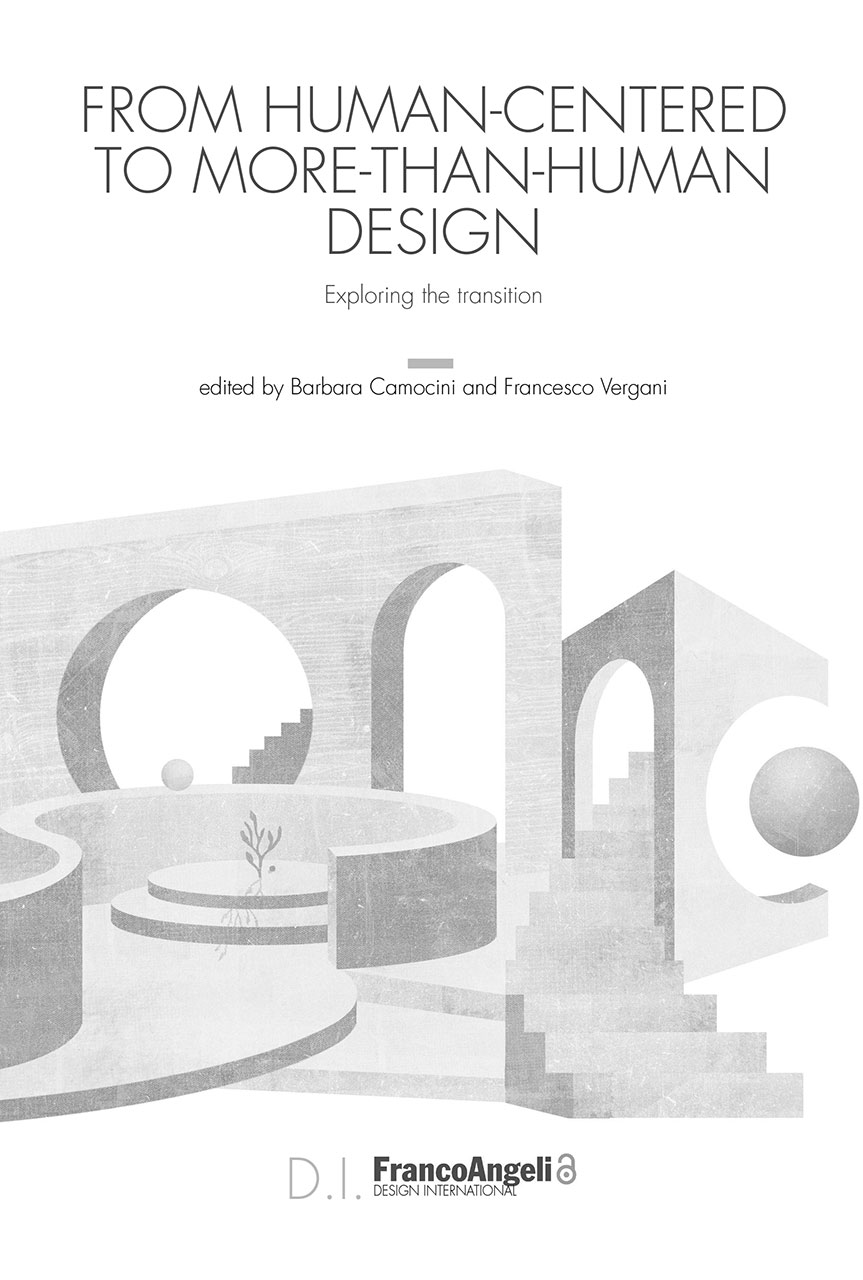 F.008
F.008
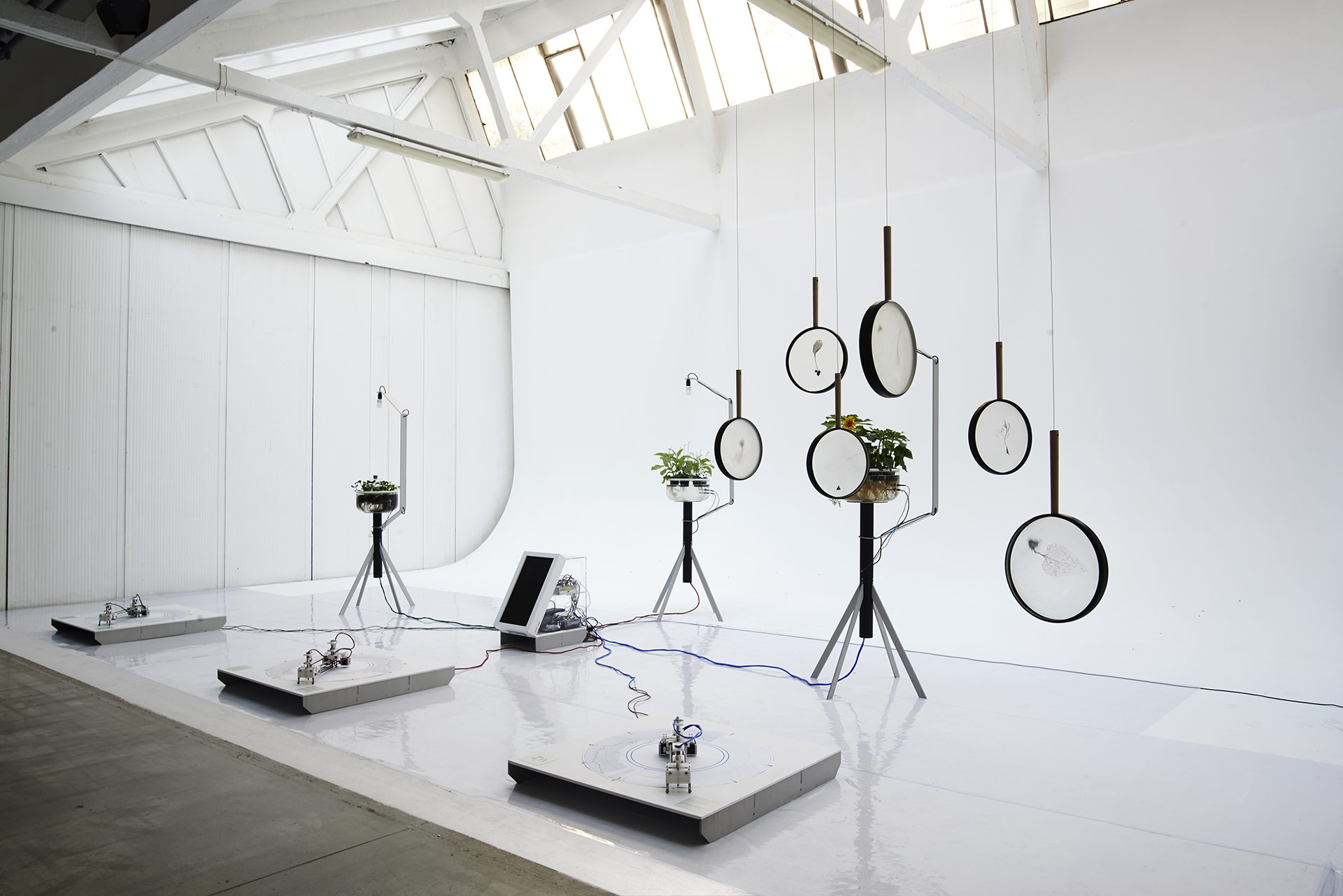 F.001
F.001
 F.002
F.002
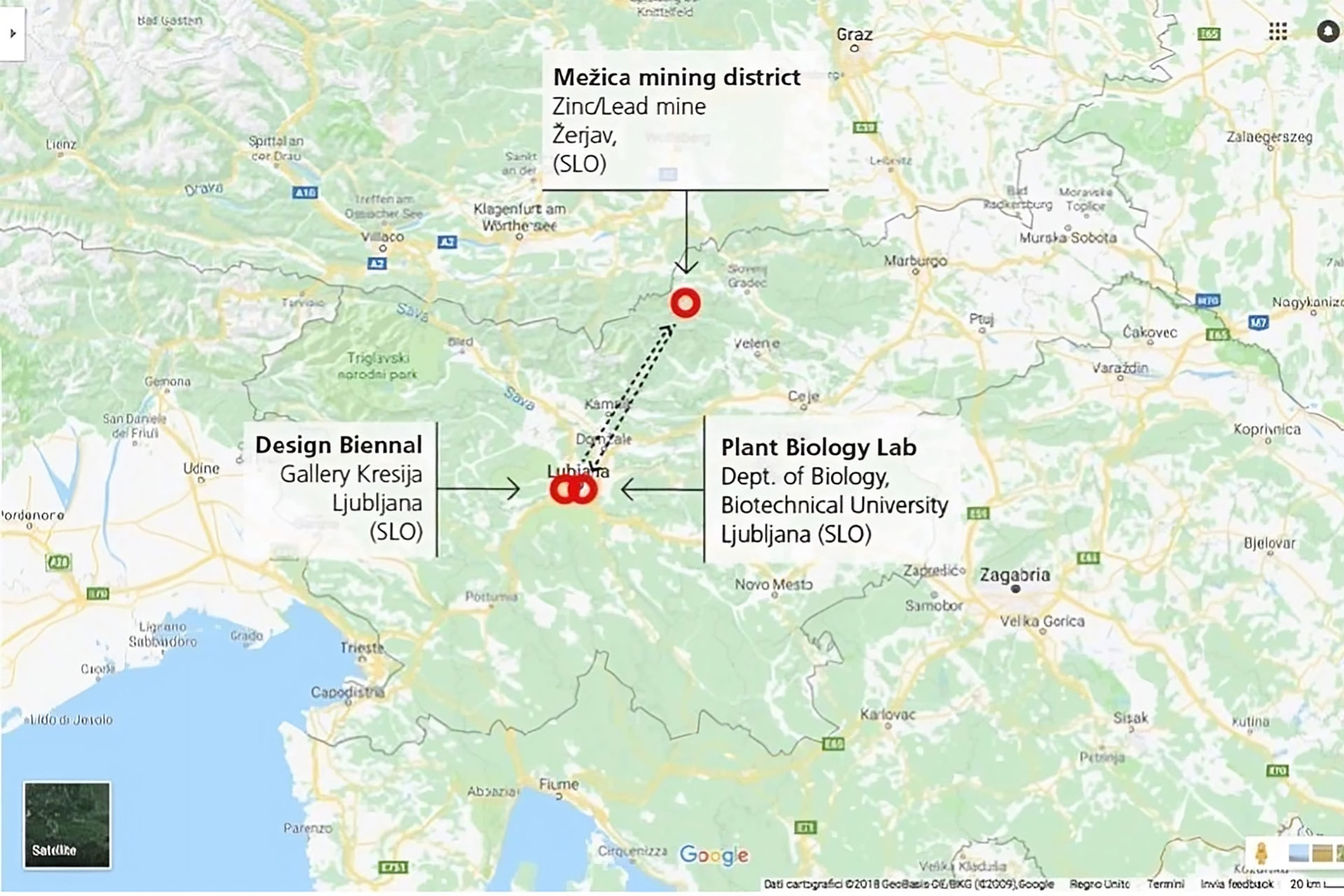 F.003
F.003
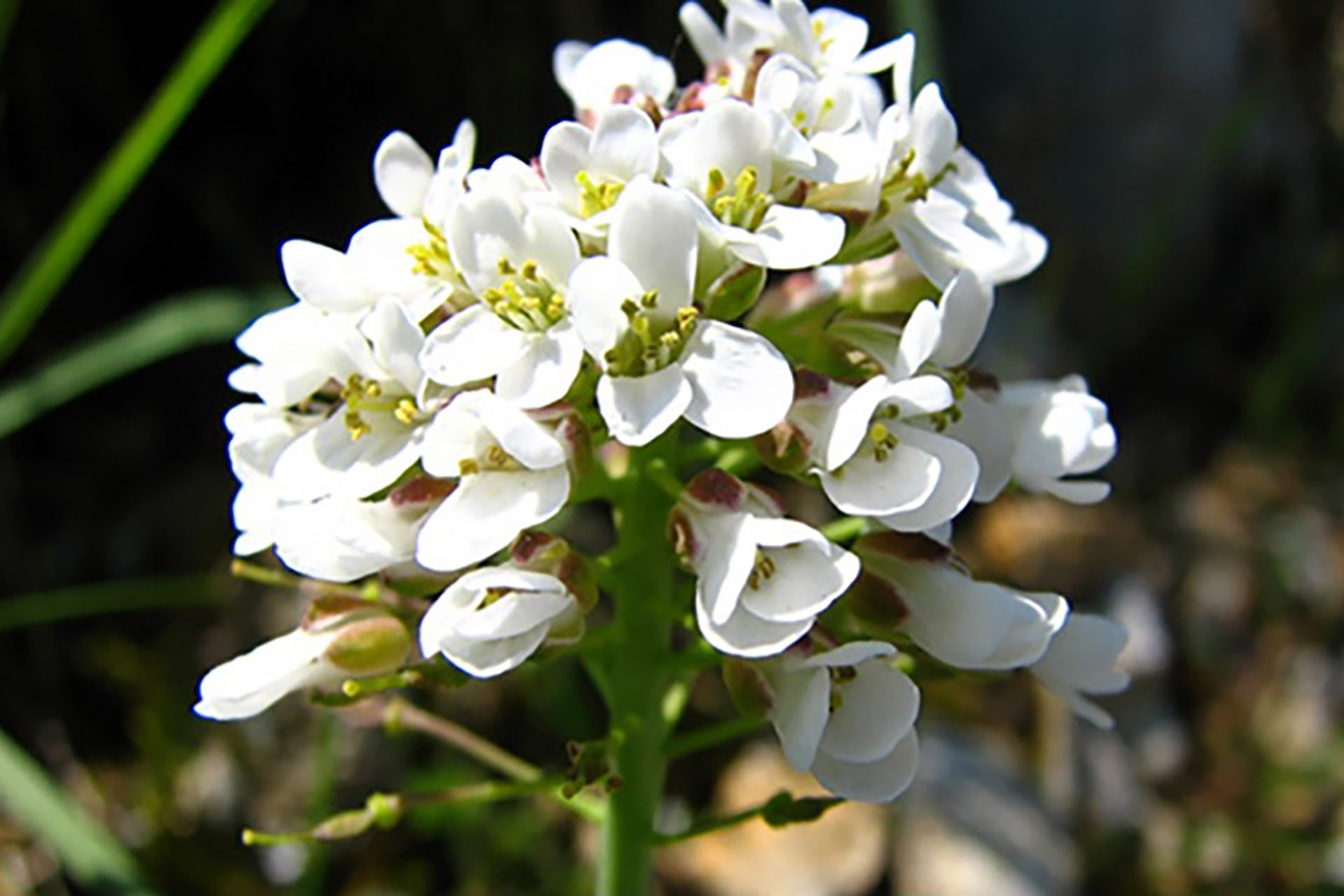 F.004
F.004
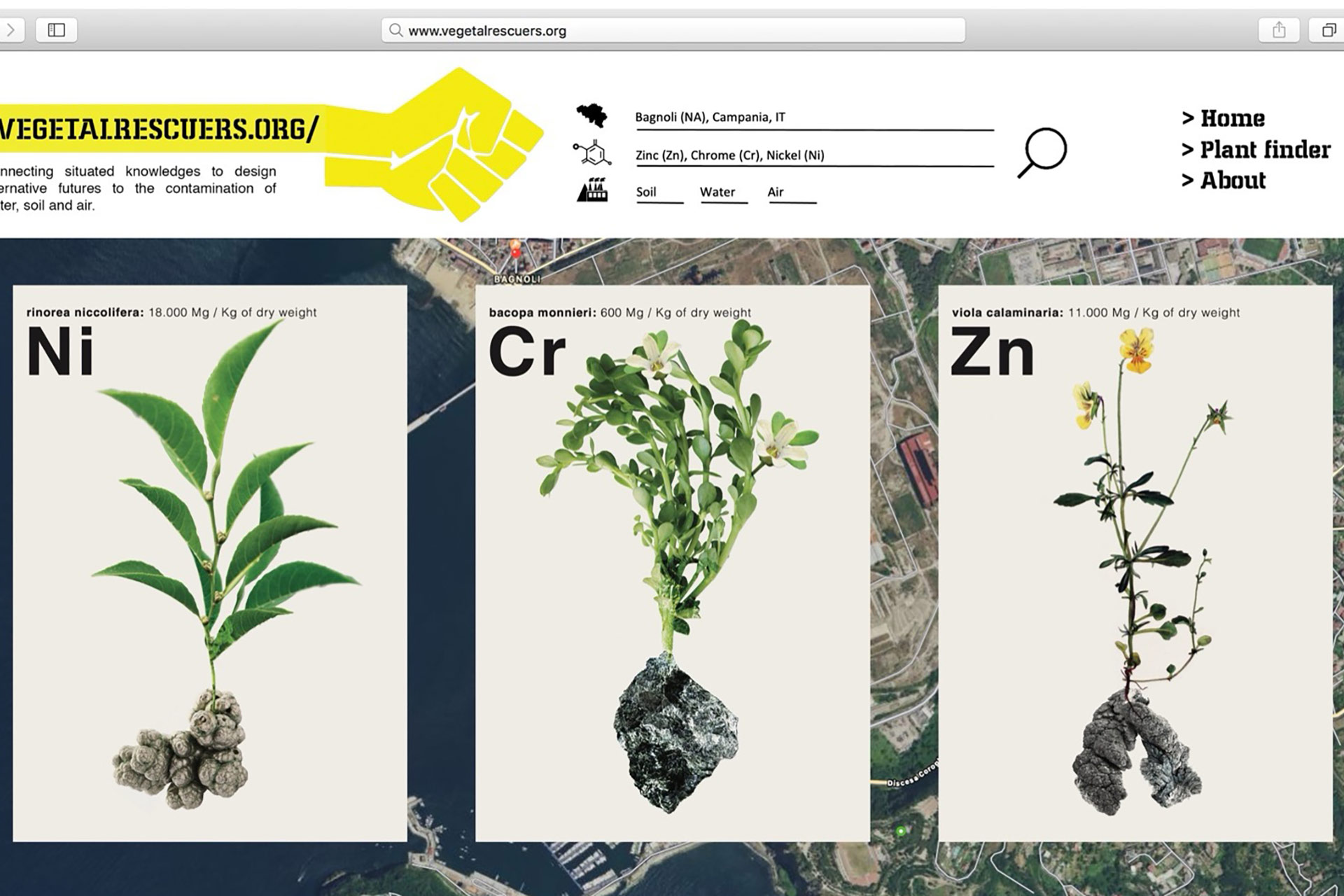 F.005
F.005
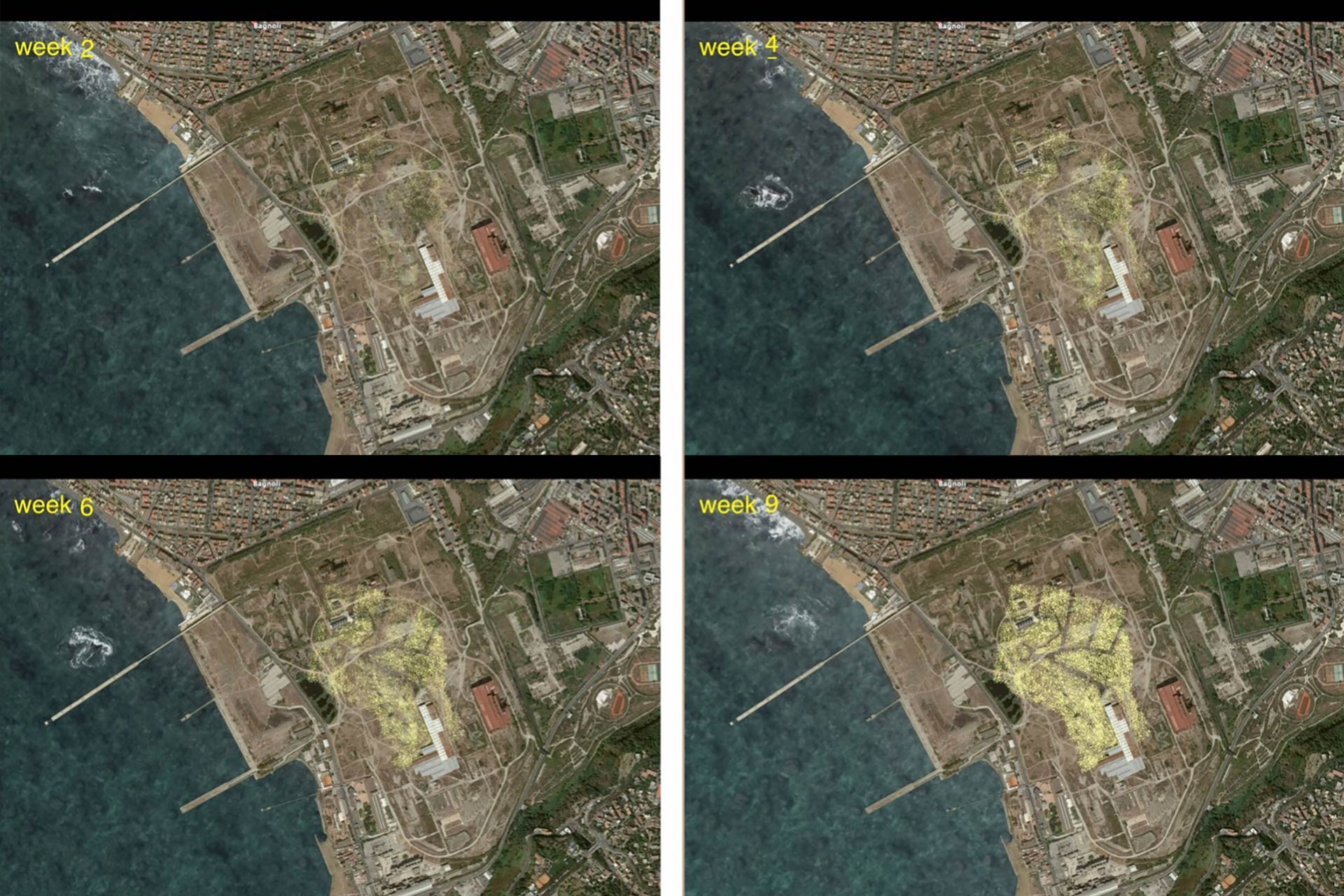 F.006
F.006
W.003
From Human-Centered to More-Than-Human Design
Within The Metabolic Network: Studies in Multispecies Design
Doing Multispecies research asks us to learn to comprehend the entities we are about to work with. Not only their biological identity but first and foremost their ways of weaving relationships, the power relations that link them to others (human and otherwise), and the factors that regulate the network in which they operate. Being Design oriented towards the future, the practice of Multispecies Design moves beyond the ethnographic boundaries of the past and present, considering more speculative stances leading to world-making processes, future scenarios, and storytelling. This chapter addresses one fundamental aspect in Multispecies Design Research, that is, asking what kind network the design is designed to explore, who participates in it and how participation is achieved. By theoretically drawing from traditions of Multispecies theory, the work considers the projects Geomerce and Vegetal Rescuers, two design installation that intertwines plant research with a series of ethnographies focused on the theme of vegetal agency in contaminated landscapes. By following the plants’ metabolic processes, it was possible to navigate across the growing sites of hyperaccumulating flora, exploring their interweaving of relationships from within, and understanding how those species -often understood as weeds to eradicate, can manage to configure unexpected more-than-human worlds.
Words
In recent years, the concept of Multispecies started to travel across the practice of artists (see, for instance, Kirksey, 2014; Korsbaek, 2016) and designers (see, for instance, Gatto, 2019; Gatto & McCardle, 2019), providing inputs for re-thinking the role and position of nonhuman participants within design and its processes. In design, ‘participation’ can be read as a conversation between users (Lawson, 2005); however, concerns and questions arise when participants are biologically different others or simply do not communicate through normative human methods. How does participation occur, through what means and how does that affect the design process? Hence, the need to find modes of engagement that can led us to explore and acknowledge other species’ ways of being and acting in the world. Multispecies design involves experimenting with environmental methods and tactics that can led us to listening those other ‘voices’ and letting them permeate the design process.
One approach previously investigated suggests to focus on relational narratives in complex ecosystems (Gatto & McCardle, 2019), such as polluted areas and degraded sites. Those territories, rather than being explored through conventional dystopic lenses, can actually provide important opportunities of encounter with other-than-humans. This echoes Anna Tsing’s argument, according to which at the heart of our encounter experiences does not proliferate the theme of “purity” (A. Tsing 2015) but that of contamination, the only one capable of changing world-making processes and leading to mutual worlds and new directions. The idea here is to use ethnographic methods involving following nonhuman others across what Tsing calls “blasted landscapes” (A. L. Tsing, 2014). In the case of plants, the tactic of “following” (Deleuze & Guattari, 1980, p. 11; Marder, 2015; Gatto & McCardle, 2019), can be seen as one way of entering into their social life, encountering the actors and forces that populate their existence and simultaneously acknowledging the reciprocal affordances of people and plants as they encounter each another. The encounters that emerge from such practice are the result of relational agencies through which different human subjects (the researcher and those who became involved in his/her work) choreograph intimate processes of meaning-making with (and about) other species.
In the discussion of multispecies networks, the notion of agency plays a crucial rule. In its simplest form, the concept indicates the capacity of acting and transforming creatively and autonomously. For long, the concept centralized humans as exclusive agency holders, thus attributing “action to a small number of powers [and] leaving the rest of the world with nothing but simple mute forces” (Latour, 1993). Callon and Law suggest this to be a problem rooted on western societies, which tend to attribute action and will only when two classes of conditions are met, that is, ‘intention’ and ‘language use’ (Callon & Law, 1997, p. 491). Since the last century, post-humanist scholars have been drawing attention on the idea that autonomous and creative action is not a prerogative limited to the mankind but should also account for biologically different others. Here, agency does not equate with intentionality but is rather seen as a relational achievement, involving the creative presence of organic beings, technological devices, and discursive codes.
When venturing beyond the human, the issue of agency gets more intricated, particularly when we talk about flora. First, the ways in which we understand plants is determined from biological and physiological differences that inherently exist between us and them, which result in entirely different ways of perceiving and acting. To the human eye, for instance, plants cannot move, sense, think and therefore act. And this, if we consider what Giorgio Agamben calls “cécité réciproque” (Agamben, 2002), might be even reciprocal. Second, plants act in their place according to their own vegetal times, which are different from ours. And yet, just like humans, they are involved in processes of construction of reality, in which they are anything but passive beings.
At those days, both, popular and scholarly accounts of plants’ secret life got us to accept the idea that trees might be involved in significant agentic forces. Considering the physiological impossibility of plants to change their growing place, American author Michael Pollan borrows four vegetal species to introduce their “eye views of the world” (Pollan, 2002). Before him, Francis Hallé argued that precisely because plants lack of mobility, they embody biochemical differences compared to other living beings, which could even motivate animals to work for them (Hallé, 1999, p. 15). In “The Botany of Desire” (Pollan 2002), Pollan’s premises move even further, suggesting that plants successfully managed to ‘use’ humans for serving their own survival and reproductive needs, and not the opposite.
Most of the scholarly work on the agency of flora focused on plants as adult trees. Those plants wield a specific symbolic power, which often derives from their age and degree of importance within the landscape (Cloke & Pawson, 2008; Jones & Cloke, 2002; Rival, 1998). The agencies of adult trees are distributed across distant times and spaces and involve encounters that affect (and are affected by) a multiplicity of political agendas. Human geography scholar Jamie Lorimer (2007) suggests that practices of environmental governance for the conservation of biodiversity are influenced by the “charisma” (Lorimer, 2007) of nonhuman species, including trees. The concept entails that nonhumans, by changing their forms across time, have the capacity of drawing affective responses from us. Charisma, he claims, should not be seen as a list of innate properties, but as a relational achievement that is regulated by the corporeal and perceptual skills (the Umwelt) of the entities involved in the encounter. Those forms of nonhuman response act as a motivating force on humans, contributing to form “ethical sensibilities” (Lorimer, 2007; citing Bennett, 2001) capable of leading to practices of environmental conservation.
Jones and Cloke (2008), in their attempt to explore plants as agents in the co-constitution of places, propose four ways in which trees can be regarded as having significant forms of agency (Jones & Cloke, 2008; citing Thrift, 1996, pag. 26):
- routine actions consist of a plant’s biological processes of growth, reproduction, fructification, spread and colonization.
- transformative actions involve the ways in which a plant creates new directions, formations, and fields of relations, which are linked to the transformation of a place. Self-seeding and spontaneous growth are transformative actions: when remixed with the social, they create transformative effects.
- purposive actions consist of the capacity of influencing future courses of action (e.g. the DNA of a plant embeds specific instructions. A purposive action is the capacity of the plant to enact them);
- non-reflexive actions consist of a plant’s capacity to engender affective or emotional responses from those who dwell amongst it (e.g. see Lorimer’s notion of charisma) ;
Those features, according to Jones and Cloke (2008), can be used to account for creative agencies that are usually assumed to just belong to humans, and to explore how plants can become part of large multispecies networks.
Conceived as an itinerant installation, Geomerce (Figure 1) is a design project investigating how the physiology of hyperaccumulating flora can help to geographically situate issues of soil pollution and imagine alternative agricultural practices to be developed on contaminated sites. Hyperaccumulators are a particular kind of plant species, known within the natural sciences for their efficiency at absorbing heavy metals from polluted soil, and accumulating those metal particles within tissues and leaves. The mineral absorbed by those plants can then be extracted, by harvesting the leaves and burning the biomass, a process known as phytomining (Rascio & Navari-Izzo, 2011).
As these species’ ability to colonize contaminated sites depends on their capacity to evolve metal-tolerant ecotypes, natural scientists began to study their behaviors as a form of self-defense from external actors (Boyd & Jhee, 2005; Kazemi-Dinan et al., 2014). Sociological readings of this process would further position the mechanism of metal uptake as a mode of vegetal agency. This includes aspects such as those plants’ ability to ‘witness’ histories of human transitions on their territory and facilitate cross-species evolution in multispecies environments (Gatto, 2017). As many of the metals absorbed from those plants are also listed on international financial markets, Geomerce attempts to re-interpret the contaminated site as a living financial asset. With the support of hyperaccumulating flora, the installation draws a speculative scenario where agriculture blurs with finance and farming decisions result from the collaborative effort of people and plants, thus suggesting more-than-human readings of ‘contamination’ that account for both biological and economic factors. The installation’s main element is a series of three extraction units that accommodate different species of hyperaccumulating plants, whose roots are immersed in a hydroponic solution made of water and specific concentrations of heavy metals. Each unit also embeds sensors that monitors the quantity of metal absorbed by each plants’ group. The data are subsequently crossed with the value of the extracted metal in the financial market, using information provided from the London Metal Exchange (LME). The resulting data is then transmitted to a series of plotting units, which draws infographics reflecting three interrelated figures: the amount of metal absorbed from the plants, the real-time value of the specific metal in the market, and a digit that assembles the two figures (Figure 2). The latter, drawn hourly, portrays the value-per-year of a hectare of contaminated soil, assuming it was cultivated with hyperaccumulating flora and according to the real-time extraction activity monitored during the performance.
Being designed to be publicly exhibited, Geomerce is then circulated as a research object, finalized to explore multispecies networks in given geographical contexts. In 2017, the installation was exhibited during the twenty-fifth edition of BIO, the Ljubljana Design Biennial, inside a gallery located within the city center. The process saw the engagement of the Plant Biology department of the University of Ljubljana, which provided information concerning possible plants to install within the exhibition and their growing sites (Figure 3). Focus of the scientists at the lab is the hyperaccumulator Thlaspi praecox (Figure 4), a species they first identified in proximity of a former Slovenian mine. With scientist, we formed a research team and planned an excursion to the site in the Mežica valley, in view of finding, observing, and sampling some specimens of Thlaspi to include in the installation. On May 2017, three days before the opening of BIO25, we visited the site, with a team including six scientists and myself. The walk provided information about the ecology of that place, the way in which the ecological succession in the valley began, through what species and how those could survive over several decades. By digging the soil, I could observe the alliances that those plants formed with the underground mycorrhizal network. In exchange for nutrients, the fungus facilitates the growth of those plants, protecting them from heavy contaminants such as cadmium, considered toxic even for resilient species. Walking the site and doing fieldwork on it led us to a population of Thlaspi praecox, where we collected the samples later installed in Geomerce.
Inside the gallery, the project was displayed as a solo exhibition for 4 days. To explore how the Thlaspi praecox participated in Geomerce’s performance, two public activities were organized in collaboration with one plant scientist: a presentation and a debate. The events mobilized and aggregated different audiences inside the exhibit space, shedding light on the ways in which visitors, through their interactions, engaged with issues of soil pollution. For instance, some inhabitants from the Mežica valley who visited the installation gathered around the project, to discuss with the biologist the ecological functions of the plant for their territory. In an interview, one of them claimed to have an emotional bond with those plants, as they shared with her an entire life in that territory. Rather than becoming a cause of concern, aspects of geographic territorialization leveraged on that visitor’s sense of belonging to the land and the urgency to plan a better future for its inhabitants. Experiencing Geomerce’s performances brought others to think about alternative agricultural futures for the valley, which could remediate the soil and at the same time provide opportunities for generations to come. Some visitors were more interested instead in the performative dimension of hyperaccumulators. One environmental consultant explained that Geomerce suggested a re-thinking of contamination through the perspective of those plants. This brought him to consider the implications of phytomining on a larger, more-than-human scale, reflecting upon factors that he would have otherwise left aside.
The format used to exhibit Geomerce and the following debate brought people to engage in multiple encounter experiences with the performing plants and reframe their understanding of soil contamination. Those activities did not simply involve the biologist and the designer in quality of experts, but rather assembled a network of heterogeneous participants, including environmentalists, social scientists, and engineers, who could exchange ideas, opinions, inform each other, and discuss the issues raised by the project.
Vegetal Rescuers is an ongoing design research project, initiated on occasion of the “Art Meets Science” residency, a trans-disciplinary initiative promoted from the University of Wageningen (WUR). For the event, which took place in October 2018, I was invited with designer and researcher Alessia Cadamuro to collaborate for two months with scientists from WUR, to explore opportunities of cross-contamination and mutually enrich our fields of expertise. Vegetal Rescuers involved a collaboration with biologists from the Environmental Sciences group and social scientists from WUR Sociology department; together, we worked on a theme of evolutionary sciences, exploring how evolutionary processes could increase resilience in the face of accelerating global change (Wageningen University & Research, 2018)
The topic was approached from the team through unconventional exploratory lenses, posing questions related to evolutionary processes, yet moving beyond just scientific readings of ‘resilience’, and towards a more-than-human understanding of its ramifications. The project explores the theme of metal contamination through the lens of hyperaccumulators’ metabolic processes, thus continuing the work initiated with Geomerce, yet shifting the focus on those plants as actors capable of mediating alternative modes of interaction with brownfields. Particularly, Vegetal Rescuers asks in what ways plant metabolism in contaminated sites could open to alternative modes of human/plant encounter, and whether this could lead to multispecies forms of resilience and dwelling.
Building on Guattari’s notion of “Ecosophy” (Guattari, 2000), the work entails that resilience to contamination (and its material byproducts) can only occur if we merge together three main registers of ecological thinking: the environmental, the social, and the mental. The contaminated site exemplifies one between the many consequences of capitalism: it is a socially constructed place, with processes and materialities that are directly tied to the public perception of risk. As toxic contaminants are visually untraceable to the naked eye, those areas often become matter of concern for the population (Grasmück & Scholz, 2005), generating fear and neglected spaces, which prevents those territories from becoming socially actionable. Furthermore, the high cost of mechanical soil remediation usually leads to economically impractical investment projections, unless in presence of real estate development plans. As a result, most of existing contaminated brownfields remain unused, unless designated to the construction industry (Haninger et al., 2012).
The project revolves around two main design elements. The first is the database vegetalrescuers.org, whose aim is to connect situated scientific and environmental knowledges about hyperaccumulators, providing at the same time opportunities to understand what plants grow and prosper within different ecosystems, according to criteria of endemicity. The database was conceived as a trigger for environmental and social engagement, in that it represents a way for human communities to engage with the ecology of contaminated sites. One section, for instance, features a function of ‘Plant Finding’. This allows to input data concerning the location of specific sites and run a search within a growing database of plants, suggesting the three that can better grow on that soil, considering its composition and contaminants (Figure 5).
From the database, we draw the second element of the project, consisting of proposals for site-specific interventions on polluted sites. The concept entails that hyperaccumulators, by flourishing on contaminated land, might guide human communities to reconsider the ecological significance of those places, thus supporting potential requalification processes. The project involves the employment of drones, equipped with a special sowing module, capable of converting the devices into seeds printers. As contaminated sites are often extended, abandoned places, whose access to the public is usually restricted, we chosen drones as they can fluidly cover the vastness and unevenness of such territories, compared to unmanned ground vehicles. By programming those devices to follow a specific air path, we foresaw seeds to be evenly sprinkled on the ground, even in areas that would otherwise remain inaccessible.
The drone’s paths follow the graphic outline of a raised fist, the logo of the project (Figure 6), however the actual growth of the artwork depends on the agency of the seeds: their way of interacting with the ground on which they fall, the climate, the type of flora and fauna living in the area. Most of the seeds might or might not grow, some of them might get dispersed by the wind or change their original location. This experiment of drone-sowing wanted to account for the hyperaccumulators’ metabolism as a performative design process, changing over time and dependent on pre-designed aerial routes as well as on the routine, purposive and transformative actions (Jones & Cloke, 2008) of the seeds. Our purpose was to grant plants extensive ownership over the artwork and its aesthetic appearance, according to their own metabolic processes. In doing so, at each stage of the project, they would perform their actions independently, liberating both, the process from human control and the contaminated land from socially constructed biases.
Although the project is not yet fully implemented, one question that motivates it concerns what futures we could expect for those sites, assuming they would become a theatre for multispecies acts. As suggested by Cloke and Pawson, the contaminated landscape might work a site for the co-construction of intra-species relations, that is, a place for experiencing the agency of hyperaccumulators through new modes of affect and human-plant relationships. But it might also lead to human-seed alliances oriented to legitimize access to those sites, thanks to their re-qualification as milieux of environmental, cultural, and artistic interest for the community.
The question of whether this could -or not, become a viable route remains still open, however, recent events remind us that it might be possible. In New Zealand, for instance, the Whanganui river has recently become an actual “legal person” (Evans, 2020), obtaining the same rights as a human being. No need to say, the New Zealand government nowadays treats “crimes against the river as crimes against the tribe” (Ibid).
The work involved in designing and circulating the two projects came about as multispecies, multi-sited and multi-disciplinary practices. While “following” hyperaccumulator plants (Gatto & McCardle, 2019), I was able to navigate in person the places associated with their existence, moving between different sites, places and locus of knowledge production. The heart of my work, however, started right from field work done on (and about) the contaminated site. This allowed me to explore those plants’ interweaving of social relationships from within, trying to comprehend how these plants, often so small and even understood as weeds to eradicate, manage to prosper due to the settings of their land, configuring entirely new ecosystems. To get to the core of the discussion on multispecies networks and encounters, I suggest beginning by posing two questions. First, what sort of network does the project explore?
The two presented projects situate hyperaccumulating flora at the core of the design process; in particular, they are motivated by those plants’ capacity of metabolizing heavy metals. Yet, both projects attempt to interpret metabolism through more-than-biological lenses. If, on the one hand, we are used to think of metabolism as biochemical activities that permit life in living organisms (e.g. allowing the conversion of food into energy, proteins, lipids, and elimination of waste), the term can also be used as a metaphor and paradigm to account for socially enacted mechanisms. Social metabolism, for instance, refers to the biophysical transformation and distribution processes in human societies, “constituting the self-reproduction and evolution of their biophysical structures” (Pauliuk & Hertwich, 2015). Urban metabolism looks instead at the flows of material and energy in cities and urban settings.
One interesting aspects of metabolism is linked to its reading as a series of intra-species, performative processes. Monika Bakke introduced the concept of “Metabolic Network” (Bakke, 2017), as a way to discuss the links existing between plants and minerals. In doing so, her purpose is to provide a geological rather than biological reading of vegetal metabolism, which serves her as a lens to analyze vegetal agency from a relational stance transcending time and space.
Geomerce and Vegetal Rescuers show that a multispecies reading of metabolism allows considering hyperaccumulating plants as living probes for exploring blasted territories, helping us to identify what agentic forces are at play within those places. Furthermore, being the designer positioned in a dialectical space that gestures towards the future, it also allows to carry out research across the times and places that define a plant’s life, performing narrative bridges that can bring these times and places in relation to each other. In the instance of Geomerce, the original metabolic network of hyperaccumulators initially included minerals, former mines, plant scholars and other actors with which these plants interacted from their natural habitat. While inhabiting the research process, however, that network was extended to a constellation of different sites (e.g. the lab and the showroom), and cut across different temporal setting. The plants who uptake minerals from a polluted sites are the same plants that nourished the work of the labs involved in the design process; the very plants that were also brought into the exhibition venue, to process Geomerce’s solutions, suggesting its possible transformation into financial value.
The second question concerns the forms of agency exerted by the network’s participants, and how to experience them. During my lab and field work on occasion of Geomerce’s landing in Ljubliana, I observed that endemic hyperaccumulators are engaged in multiple relationships and forces. For instance, they do act politically, within metabolic networks involving post-industrial sites, national environmental policies, biologists and even laboratory things such as academic publications and lab equipment. Such mode of agency emerges relationally, as a result of the reciprocal affordances of these actors/actants. In growing on territories of political disputation (such as brownfields or former industrial sites), often subjected to the scrutiny of national environmental policies, each metallophyte species manage to engender responses from national research institutions, which then aggregate biologists and lab equipment to identify opportunities for the remediation of dirty land. The relationship between those actors resulted in relational processes that transformed the territory: some of these sites were later cleaned up, although often without the employment of phytoremediation processes.
Hyperaccumulators also act as witnesses of their environmental disturbances, both historical and contemporary. My field encounters with these plants revealed the geo-historical dimension of their presence on particular sites, linking stories of contamination otherwise temporally distant. This was partly possible as a result of the transformative actions in which those plants are involved, that is, their capability of forging relations determining a transformation of the territory. To encounter that agentic dimension, I had to assemble objects and practices that helped me to make sense of it. Tsing’s notions of Assemblage and Bodily Forms (A. Tsing, 2013, p. 32) were used as ethnographic concepts to approach those species as participants in multispecies networks. The plants collected from the former mines were chosen while paying attention to their geographical position, bodily form, color and vitality, through a tacit mode of interaction that I attempted to establish with them, in quality of witnesses of past environmental events.
This way of reading participation in the metabolic network had important implications for me and for the project. Most importantly, it brought me in direct touch with unexpected, other-than-human perspectives concerning the future of some territories, alternative to those proposed by current techno-industrial models of environmental restoration. Understanding that plant metabolism is not only entangled with our social life but can also emerge as an unplanned consequence of it, does reposition us as human beings, and at the same time helps imagining scenarios of environmental collaboration and rehabilitation, as opposed to logics of accumulation and resources exploitation. Given the current ecological crisis, now more than ever we need to familiarize with these viewpoints, as not only they can they help us overcome the fatigue and distress of “living in the ruins” (A. Tsing, 2005), but can also provide us a means to re-negotiate our existence in a broken nature, paving the way to an inversion of thought towards the environment.
I would like to thank: Stimuleringsfunds Creative Industries; Giovanni Innella; the Plant Sciences and Environmental Sciences group of the University of Wageningen. This book chapter partially builds on work previously presented at conference: The Ecological Turn, January 2021. Another version was presented at conference: Safe Harbors, October 2021.
References
Agamben, G. (2002). L’Ouvert (Translated by Joël Gayraud). Payot & Rivages.
Bakke, M. (2017). Art and Metabolic Force in Deep Time Environments. Environmental Philosophy, 14(1), 41–59. https://doi.org/10.1109/AMS.2002.1029693
Bennett, J. (2001). The Enchantment of Modern Life: Attachments, Crossings, and Ethics. Princeton University Press.
Boyd, R. S., & Jhee, E. M. (2005). A test of elemental defence against slugs by {Ni} in hyperaccumulator and non-hyperaccumulator {Streptanthus} species. Chemoecology, 15(3), 179–185. https://doi.org/10.1007/s00049-005-0310-z
Callon, M., & Law, J. (1997). Agency and the Hybrid Collectif. In B. Herrnstein Smith & A. Plotnitsky (Eds.), Mathematics, Science and Postclassical Theory (Reprint, pp. 95–117). Duke University Press.
Cloke, P., & Pawson, E. (2008). Memorial trees and treescape memories. Environment and Planning D: Society and Space, 26(1), 107–122. https://doi.org/10.1068/d79j
Deleuze, G., & Guattari, F. (1980). A thousand plateaus: Capitalism and Schizophrenia. University of Minnesota Press.
Evans, K. (2020). The New Zealand river that became a legal person. BBC. http://www.bbc.com/travel/story/20200319-the-new-zealand-river-that-became-a-legal-person
Gatto, G. (2017). Geo-Speculating with a Hyperaccumulator : A Former Mine in North-Rhein Westfalia from the Viewpoint of Arabidopsis Halleri. 6th STS Italia Conference. Sociotechnical Environments.
Gatto, G. (2019). Design as Multispecies Encounter: Plant Participation and Agency In and Through Speculative Design. Loughborough University.
Gatto, G., & McCardle, J. R. (2019). Multispecies Design and Ethnographic Practice : Following Other-Than-Humans as a Mode of Exploring Environmental Issues. Sustainability, 11.
Grasmück, D., & Scholz, R. W. (2005). Risk perception of heavy metal soil contamination by high-exposed and low-exposed inhabitants: The role of knowledge and emotional concerns. Risk Analysis, 25(3), 611–622. https://doi.org/10.1111/j.1539-6924.2005.00628.x
Guattari, F. (2000). The Three Ecologies (English Ed). The Athlone Press. http://cnc.sagepub.com/content/28/2/181.full.pdf
Hallé, F. (1999). In Praise of Plants. Timber Press.
Haninger, K., Ma, L., & Timmins, C. (2012). Estimating the Impacts of Brownfield Remediation on Housing Property Values. Duke University Press Books.
Jones, O., & Cloke, P. (2002). Tree Cultures: The Place of Trees and Trees in Their Place. Berg Publishers.
Jones, O., & Cloke, P. (2008). Non-Human Agencies: Trees in Place and Time. In Material Agency. Towards a Non_Anthropocentric Approach (pp. 79–96). https://doi.org/10.1007/978-0-387-74711-8
Kazemi-Dinan, A., Thomaschky, S., Stein, R. J., Kramer, U., & Muller, C. (2014). Zinc and cadmium hyperaccumulation act as deterrents towards specialist herbivores and impede the performance of a generalist herbivore. New Phytologist, 202, 628–639.
Kirksey, E. (2014). The Multispecies Salon. Duke University Press Books.
Korsbaek, M. (2016). DUMP! MULTISPECIES ART-SCIENCE EXHIBITION AT KUNSTHAL AARHUS. Anthropocene.Au.Dk. http://anthropocene.au.dk/currently/events/show/artikel/dump-multispecies-art-science-exhibition-at-kunsthal-aarhus
Latour, B. (1993). We Have Never Been Modern. Harvard University Press. https://doi.org/10.1016/0956-5221(96)88504-6
Lawson, B. (2005). How Designers Think: The Design Process Demystified. Routledge.
Lorimer, J. (2007). Nonhuman charisma. Environment and Planning D: Society and Space, 25(5), 911–932. https://doi.org/10.1068/d71j
Marder, M. (2015). the Place of Plants: Spatiality, Movement, Growth. Performance Philosophy, 1(Bradbeer 2005), 185–194. https://doi.org/10.21476/PP.2015.1128
Pauliuk, S., & Hertwich, E. G. (2015). Socioeconomic metabolism as paradigm for studying the biophysical basis of human societies. Ecological Economics, 119, 83–93. https://doi.org/10.1016/j.ecolecon.2015.08.012
Pollan, M. (2002). The botany of desire: a plant’s eye view of the world. Random House. https://doi.org/10.5860/CHOICE.39-1567
Rascio, N., & Navari-Izzo, F. (2011). Heavy metal hyperaccumulating plants: How and why do they do it? And what makes them so interesting? Plant Science, 180(2), 169–181. https://doi.org/10.1016/j.plantsci.2010.08.016
Rival, L. (1998). The Social life of Trees. Anthropological Perspectives on tree symbolism. Berg Publishers.
Thrift, N. (1996). Spatial Formations. Sage Publications. https://doi.org/10.4135/9781446222362
Tsing, A. (2005). Friction: An Ethnography of Global Connection (Princeton).
Tsing, A. (2013). More-than-Human Sociality: A Call for Critical Description. In K. Hastrup (Ed.), Anthropology and Nature (pp. 27–41). Routledge.
Tsing, A. L. (2014). Blasted Landscapes (And the Gentle Art of Mushroom Picking). In E. Kirksey (Ed.), The Multispecies Salon (pp. 87–109). Duke University Press.
Wageningen University & Research. (2018). Creative Innovation: Art Meets Science. https://www.wur.nl/en/article/Creative-Innovation-Art-Meets-Science-1.htm
Team
Design & concept
Gionata Gatto
Methodology
Gionata Gatto
Writing
Gionata Gatto
Review
Gionata Gatto
